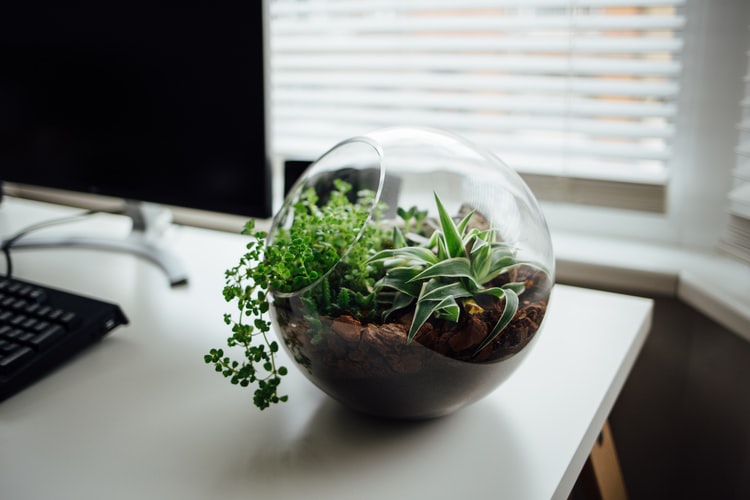To the untrained eye, a vivarium can be nigh hard to distinguish from a terrarium. The situation is made even more difficult by the fact that both enclosures are often marketed with the wrong name, or the terms are used interchangeably. Need some help establishing the difference between a vivarium and a terrarium? Our guide has all the key details you need to know.
What is a Terrarium?
Terrariums were originally used as enclosures to house reptiles before vivarium enclosures became commonplace. In fact, the name is a corruption “terrestrial” and “aquarium”, with the latter being used as a substitute for housing reptile species. Contemporary terrariums are much more specific products.
They are usually used to house animals that require both terrestrial and aquatic environments. If you’re looking to keep frogs and other amphibious species, a terrarium is probably what you’re looking for. Terrariums are usually made from a combination of high-grade plastic or glass, with the overall design waterproofed to ensure moisture and water levels remain in place.
More often than not, terrariums are used to house plant species. They work in much the same way as a greenhouse, only on a much smaller scale. They are often sealed against the external environment, with the interior of the terrarium serving as its own protected ecosystem. Moisture remains within the enclosure, evaporating and condensing on the sidings before dripping down and returning to the soil, where it is reabsorbed by plant root systems. This cycle repeats indefinitely.
What is a Vivarium?
Technically, a vivarium can apply to any enclosure you utilise to house an animal. However, it is more accurately used to refer to an enclosure intended to house reptiles. Most vivarium enclosures are made from high-grade plastic, glass and wood. Although a vivarium may be fairly enclosed, they are rarely ever completely sealed, as owners will need regular access to the interior to provide food and nourishment for their pets. If you’re keen to keep reptiles and other cold-blooded animals, you almost certainly want to purchase a vivarium. However, you can ultimately transform an established terrarium into a vivarium at a later date.
Care and Maintenance
A plant-based terrarium requires next to no maintenance. Provided you’ve properly planted your terrarium and have provided it with an initial watering, the sealed ecosystem will take care of itself. However, if you’ve also introduced animal life and established a vivarium, you will need to undertake more extensive maintenance. Although a vivarium can be left largely untouched, besides providing animals with food sources, you will need to keep an eye on bacterial growth.
If bacteria is left to grow unchecked, it can prove damaging to the health of your pets. Even a terrarium will require occasional maintenance to ensure soil moulds and other harmful bacteria is kept from developing into a problem. You can pre-empt such issues by selecting your plants and animals wisely. Taking the time to install decent substrate and thinking carefully about the interior design and structure of your vivarium or terrarium will also negate issues down the line.

